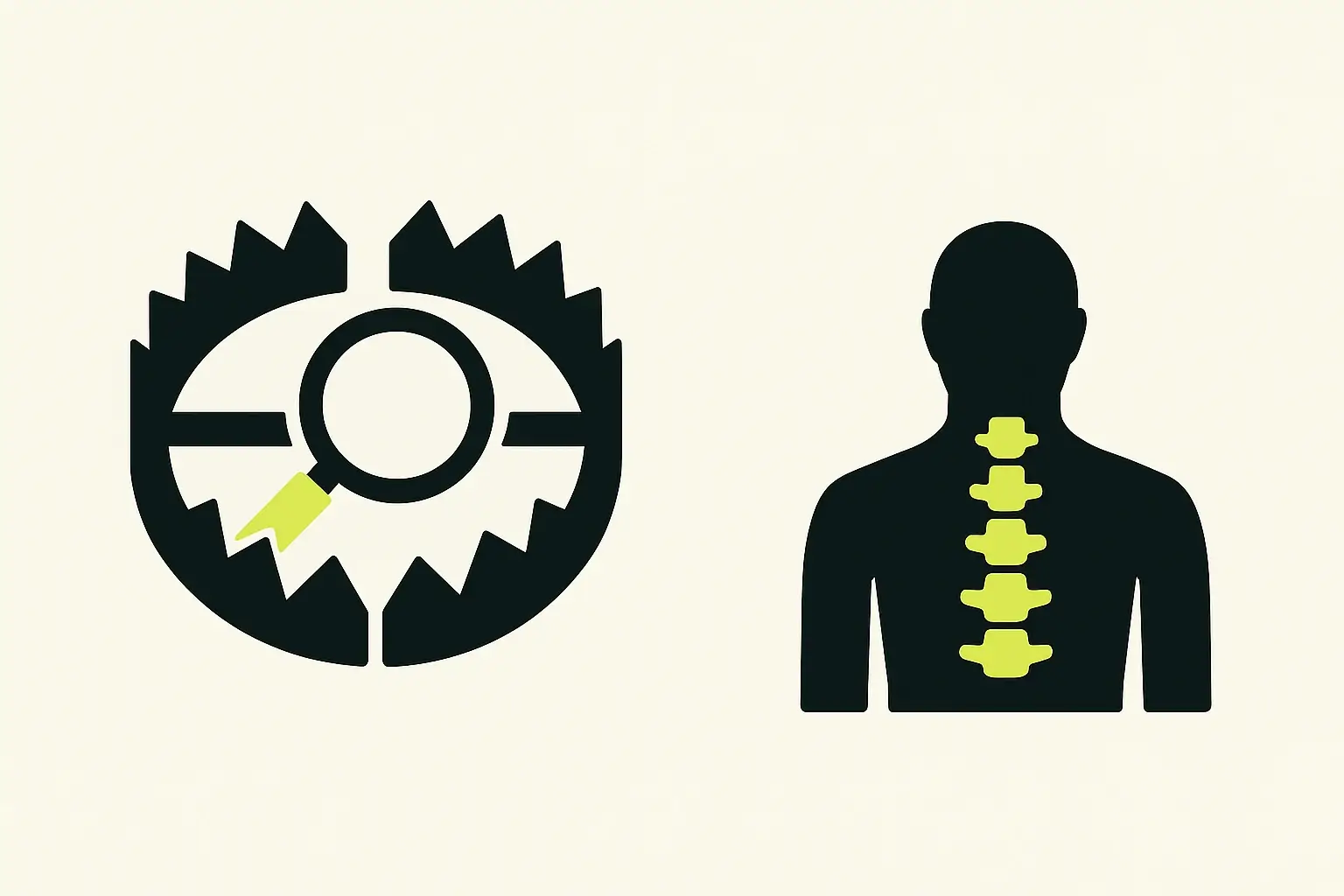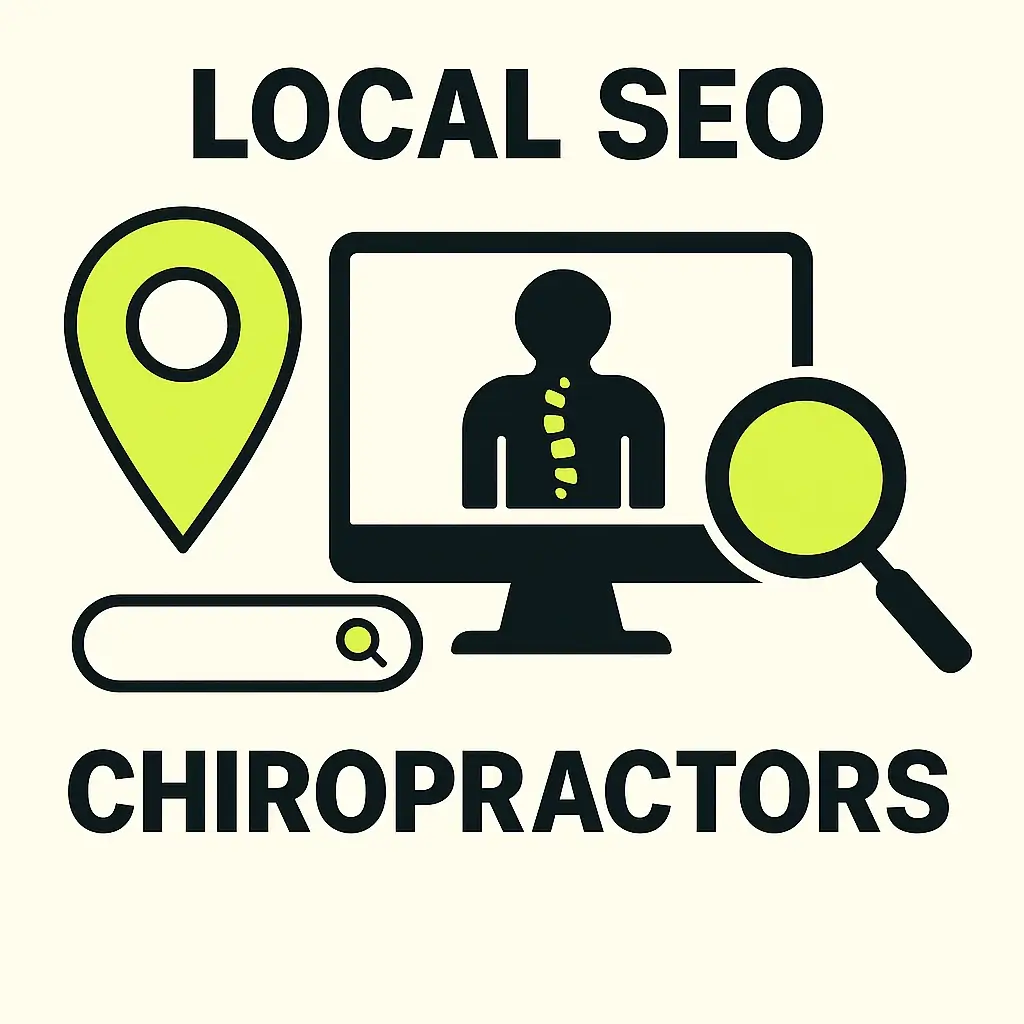Extract structured data from hundreds of documents at the same time.

If you're a chiropractor trying to rank on Google, you've probably been told this:
“Just go after ‘chiropractor near me.’ That’s the money keyword.”
Sounds good. Feels obvious.
But here’s the trap—every clinic in your city is doing the exact same thing.
And that’s not strategy. That’s digital arm-wrestling.
We’ve worked with dozens of clinics across Vancouver, Portland, and beyond, and we’ve seen it over and over:
Clinics fighting to rank #1… but still not getting the calls. Why?
Because they’re optimizing for what they do, not what their patients actually search.
Patients don’t Google “chiropractor.”
They Google their problem.
And if your website doesn’t speak to that pain in their words—you’ll stay invisible, no matter how many SEO boxes you check.
Change your keywords, change your calendar.
Let’s break it down.

“Chiropractor near me.”
That’s the first thing every SEO agency targets.
And if you’re in a city like Vancouver or Portland?
That term is cutthroat.
You’re going up against:
And even if you do rank? Here’s the hard truth:
That keyword is broad. It’s vague. It doesn’t always convert.
It’s like trying to sell to someone who walked into the mall just to look around.
Compare that to someone Googling “sciatica pain after car crash Vancouver”—that person isn’t browsing.
They’re booking.
So ask yourself: Are you fighting over a crowded keyword… while ignoring the high-intent ones no one else is touching?

Let’s be real—most people don’t wake up and search “chiropractor near me” just because they’re curious.
They search based on what they’re feeling.
It’s usually something like:
These are what we call long-tail keywords.
They’re specific, low-competition, and they usually come from people who are ready to book—not just browse.
The best part? You already treat these problems every day.
You just haven’t created content that mirrors how people actually search for them.
Here’s a simple way to rethink your SEO:
When you build pages, blog posts, or service listings around these types of real-world problems—using real-world language—you stop trying to compete with everyone else... and start showing up for the people who are already looking for what you do.
That’s where local SEO starts working for you.

You don’t need SEMrush or Ahrefs (though they help).
You’ve already got two of the best keyword tools for free:
Start typing “chiropractor for…” and see what fills in.
That’s what people are really searching.
Search something like “chiropractor for car accident” and scroll down.
You’ll see questions real users ask—and every one of those is a blog title, page header, or FAQ waiting to happen.
Want more ideas?
Real people don’t use medical terms. They use “crack,” “pop,” “twist,” and “hurts when I sit.”
Use those terms on your site—without sounding like a robot—and you’ll get found more often.

They chase big keywords like “chiropractor near me” and ignore the high-intent searches their actual patients are using.
Dial into specific problems—like sciatica, car accidents, or prenatal care—and you’ll rank faster, convert better, and attract better-fit patients.
Most chiropractic websites have one page that lists all their services in a bullet-point format.
That might check a box for your site map—but it doesn’t help you get found.
Google wants to serve the most relevant, specific page for every search.
If someone’s looking for help with “whiplash after a car accident,” they’re not going to get excited by a generic “Our Services” page.
Here’s what to do instead:
Each page becomes its own SEO asset.
The more precise the match between the search and the content, the higher your chances of showing up—and the higher your conversions once someone lands there.

You’re not alone. Most chiropractors rely on outdated SEO tactics that don’t move the needle. We’ll show you what actually works in today’s search landscape.
This free guide walks you through our 3-step SEO framework designed to increase local visibility, drive more qualified leads, and keep your clinic ranking—without wasting time or money. (Click Image to Download)
This one stings a little, but it’s true: most chiropractors sound like they’re writing for a medical board, not for real people.
If your website says things like “subluxation correction” or “biomechanical spinal alignment therapy,” you’re losing people.
They’re looking for help with things like:
That’s the language you need to use.
You can still be professional and accurate—just make sure you’re also relatable.
Here’s a simple test:
Would your patient say this out loud to a friend? If not, simplify it.
The more your content sounds like your patients, the faster they trust you—and the more likely they are to click “Book Now.”

Let’s say you are blogging. Weekly posts. Chiropractor tips. Some SEO keywords sprinkled in.
That’s a great start—but if your blog isn't connected to real searches, it's just noise.
Here’s the fix:
And no, you don’t need to blog every week.
You need 5–10 quality posts that show Google (and potential patients) you know your stuff.
When blogs are written with real search intent in mind, they become silent salespeople—working for you around the clock.

You’ve got your address on your website. Cool.
But Google needs more than a ZIP code to believe you’re the best chiropractor in your city.
If you want to rank locally, do this:
Search engines want to match searchers with the most relevant local result.
These small tweaks send the signal that you’re not just in town—you’re part of it.

If your SEO strategy only targets “chiropractor near me,” you’re playing a losing game.
You’re fighting over scraps—while your competitors quietly show up for the searches that actually convert.
But here’s the upside: this is fixable.
You don’t need to write 100 blogs or outspend big-name clinics.
You just need to start thinking like your patients—and then show up with content that answers their questions, matches their intent, and speaks their language.
Your ideal patients are searching right now.
Make sure they find you—not the clinic across town.

1. Do I need a separate page for every condition or service?
Yes—if you want to rank for them. A dedicated page with relevant content and search-friendly language outperforms a generic “Our Services” page every time.
2. What’s the best way to find out what my patients are Googling?
Use Google Autocomplete, the “People Also Ask” box, and review how your patients talk in person or leave reviews. Their words are your SEO gold.
3. How many keywords should I focus on?
Start with 5–10 highly relevant, long-tail keywords tied to real services or problems. Don’t chase volume—chase intent.
4. Should I still try to rank for “chiropractor near me”?
Yes—but don’t stop there. Make it part of your strategy, not the whole thing. The riches are in the niches.
5. How long does it take to see SEO results?
You’ll typically see momentum within 4–8 weeks if your site is structured well and regularly updated with high-quality, local content.

Good SEO isn’t about doing more—it’s about doing the right things consistently. When your content speaks their language, your clinic becomes the clear choice.

Extract structured data from hundreds of documents at the same time.

Extract structured data from hundreds of documents at the same time.